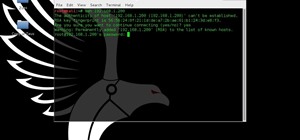

- #Ssh proxy to protect old ssh servers how to#
- #Ssh proxy to protect old ssh servers install#
- #Ssh proxy to protect old ssh servers upgrade#
- #Ssh proxy to protect old ssh servers software#
#Ssh proxy to protect old ssh servers software#
If you have questions or need help comparing, for example, on-premise servers vs cloud servers, we specialize in cloud and custom software solutions. We've helped many clients secure their legacy systems.
#Ssh proxy to protect old ssh servers upgrade#
However, using these simple methods will buy you time until you're able to upgrade or decommission your old legacy server. You shouldn't plan to keep hardware or software around for the long term if it's no longer supported or receiving updates from the vendor. ConclusionĪny of the methods we suggest are simply a band-aid to the real problem. Although this method is not bullet proof, it can mitigate pressing issues while you work on a long term solution to improve security. It ensures you still have proper SSL termination to your clients. This allows you to put a lightweight layer of protection in front of your insecure application. "We often get calls from clients running IIS 6 who get concerned when they see the infamous " Not Secure " in the address bar because any modern web browser since TLS 1.0 & TLS 1.1 is no longer supported."įor an outdated website or application, we usually rely on a reverse proxy server. Run archaic websites or applications at your own risk!Ĭompanies running internet facing websites or applications are also more vulnerable to attacks and security breaches. It doesn't get any easier than that - but if you have questions, feel free to reach out to us at Tevpro by email.

Then, configure the API gateway to handle all incoming request for your application and it will pass those on to the legacy server. Once your network is connected, configure your virtual network to help isolate the legacy server behind the API gateway.

This makes it super simple to add a layer of security between you and your legacy systems.Īll major cloud providers offer ways to link on-premise servers to their cloud through any number of secure mechanisms (VPN, SSH, private peering, etc). If you're running on any of the major cloud providers, the easiest way to implement some form of protection is through API gateway services. Securing servers in the cloud can be done in a few simple steps. What if you can't take a system offline to upgrade? SSH powers a ton of the internet and has been rock solid when it comes to connecting to servers securely.īy adding a newer, more modern server in front of your old server, you apply a layer of protection, which buys more time to fix the root of the underlying issues.

While this adds a bit more complexity to your setup, it's a very durable solution.
#Ssh proxy to protect old ssh servers install#
One approach is to install an SSH server on the legacy machine, lock down the server by IP address, and have your NGINX proxy connect to it using an SSH tunnel ( AutoSSH is your friend). You can securely connect using an old server like Windows Server 2003, but you have to use something other than SSL.
#Ssh proxy to protect old ssh servers how to#
To see how to apply this same technique using IIS, see our article on setting up a reverse proxy server using IIS. You can quickly spin up a linux machine in the cloud or on-premise, install NGINX, Let's Encrypt, and point it to your old servers to provide an extra layer of protection for those older applications. If you aren't in the cloud, one way to secure an on-premise legacy server is to setup a reverse proxy in front of it. If you choose to keep running on a server that is outdated and no longer receiving security updates, you’ll want to take steps to reduce your server’s vulnerability. 14, 2020) and will no longer supply security fixes. Most companies will migrate their applications and data off aging servers, but a fair number of clients do not.įor those firms running insecure, outdated operating systems like Windows Server 2003 and Windows Server 2008, Microsoft ended support for these servers ( J& Jan. Whether we like to admit it or not, there are tons of insecure servers out there.


 0 kommentar(er)
0 kommentar(er)
